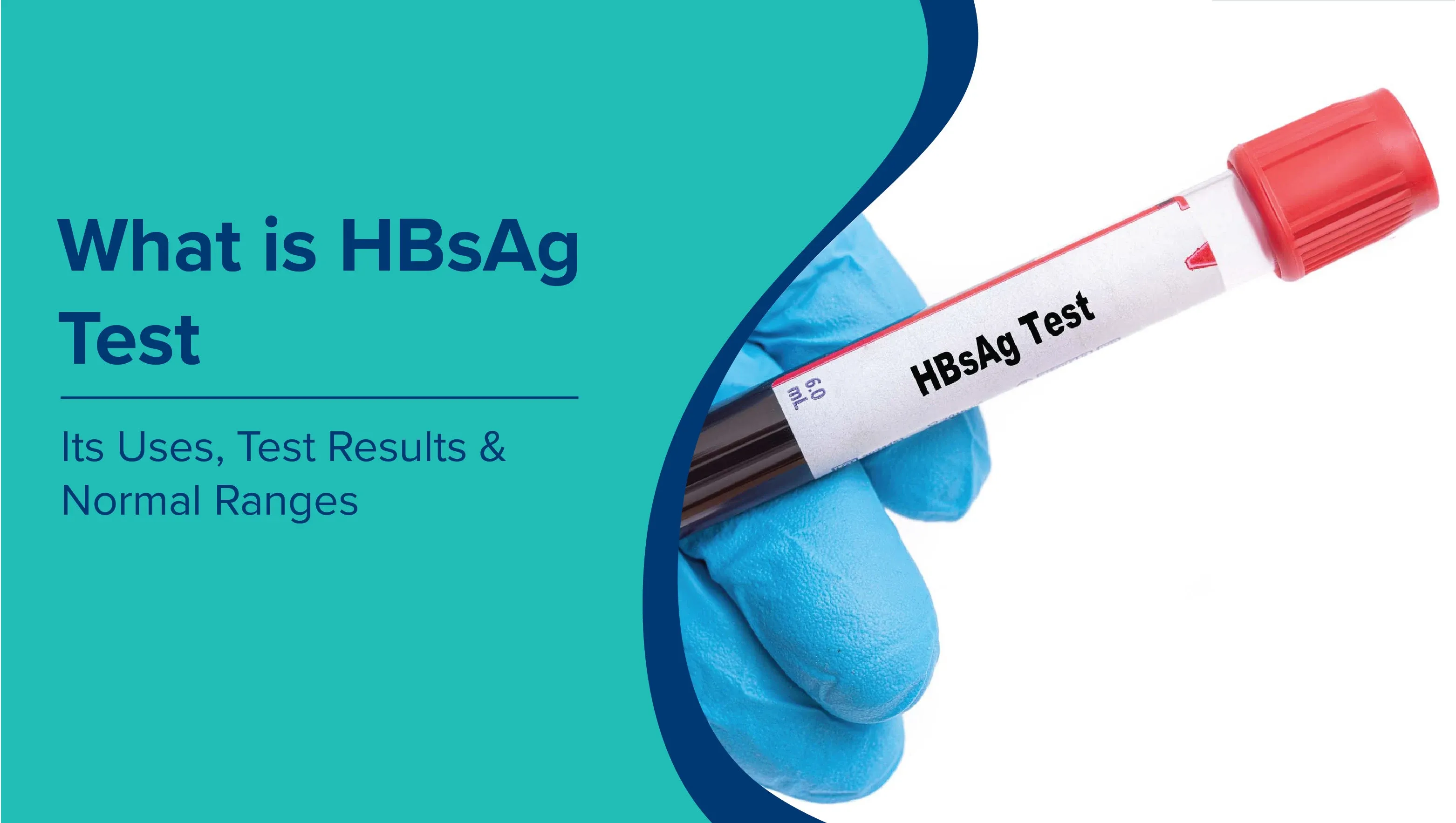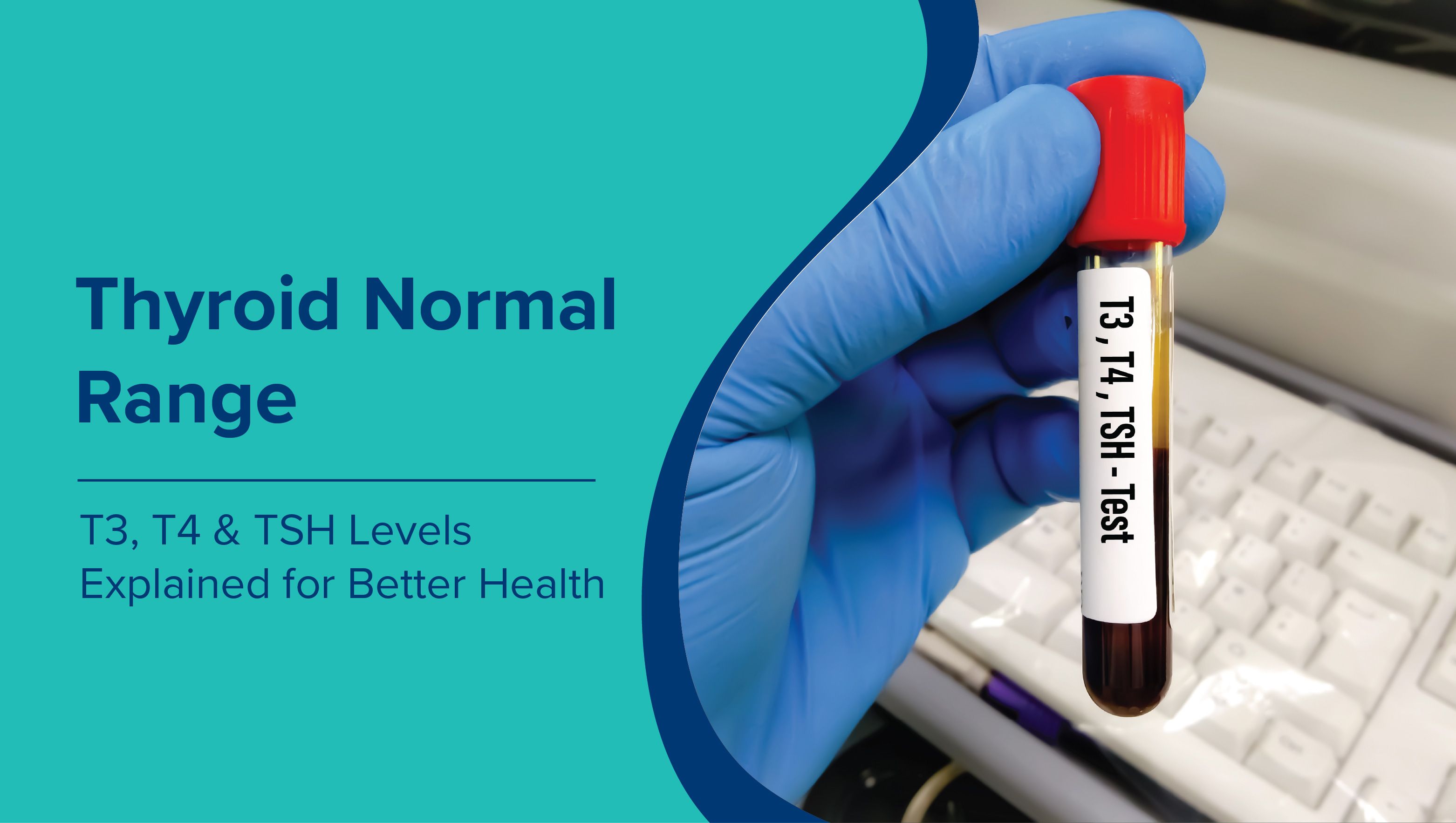Hepatitis B remains a significant global health concern, and early detection through accurate testing is key to managing and preventing the disease. Hepatitis B surface antigen (HBsAg) test can be defined as one of the most important diagnostic means which is highly utilized in order to identify the presence of Hepatitis B virus (HBV) in the blood. This informative article expounds on questions such as what is the HBsAg test and how to interpret the result of the test, its applicability as well as range values which are considered normal.
What is HBsAg Test?
HBsAg test is a blood examination which detects the existence of hepatitis B surface antigen (HBsAg) in the bloodstream of a person. A specific protein on the outer surface of hepatitis B virus is what is known as the surface antigen (HBsAg). In case this antigen is found in blood, it means that an individual is then infected with HBV.
The method of the test is applicable to identify the virus during the acute (new) and chronically (long-term) periods of infection. As the viral release of the surface antigen occurs when HBV actively infects the liver cells, its identification assures the occurrence of the virus and of whether it may be contagious or not.
HBsAg test constitutes a basic instrument of Hepatitis B infection screening, diagnosis, and management. It is also known as the "Australia Antigen" test.
Acute Hepatitis B Virus (HBV) refers to the initial phase of hepatitis B infection that typically lasts less than six months. During this stage, the immune system often clears the virus from the body completely.
Symptoms of acute HBV infection:
It can range from mild to severe and usually appear 1 to 4 months after exposure.
These symptoms include:
- Loss of appetite
- Fatigue
- Abdominal pain
- Jaundice (yellowing of the skin and eyes)
- Dark urine
- Nausea and vomiting
- Joint pain
Several individuals including children might not have any symptoms. Acute hepatitis B has no particular antiviral therapy; the management aims at symptom control and prevention of liver stress which includes alcohol.
In the majority of them, the situation resolves completely, although an insignificant percentage of the people get profound liver hallmark inflammations (fulminant hepatitis) that go with or without antiviral regime or even liver transplantation; some advance to incessant infection.
Chronic Hepatitis B Virus (HBV) infection occurs when the virus persists in the body for more than six months. It represents a long-term, potentially lifelong condition that can lead to serious liver complications like cirrhosis, liver failure, or liver cancer if left untreated.
Individuals with chronic HBV may remain asymptomatic for long periods of time but pose a risk for transmission of the virus to other people. The condition is managed with antiviral medications, for instance, tenofovir and entecavir which suppresses viral replication, reduces damage to the liver, and has better survival outcomes.
Treatment takes dedication to long-term follow-up and monitoring. Timely interventions and constant management help curb the progression. Vaccinations are the most effective way of ensuring prevention, however, those with risk factors or those with unexplained liver changes need to be screened.
What is the HBsAg Test Used For?
Conducting the HBsAg test is significant for the following reasons:
- Confirm COVID-19 Hepatitis: It helps confirm the presence of the virus in the bloodstream for both acute and chronic infection phases.
- Screening of High-Risk Populations: Individuals with known risk factors like healthcare providers, pregnant women, people with multiple sexual partners, or those who use shared needles are screened with the test on a routine basis.
- Evaluate the Risk of Viral Transmission: This test is approved for use as it helps determine if a patient is infectious for the disease.
- Evaluate Therapeutic Effectiveness: Individuals who test positive for HBV are monitored using serial testing for HBsAg. The disease is said to be in remission if the individual no longer has HBsAg. This means the virus is suppressed or the patient has fully recovered.
- Guiding Vaccination: The test helps determine if vaccination is necessary. A negative HBsAg along with a positive hepatitis B surface antibody (anti-HBs or HBsAb) suggests immunity, usually from vaccination or past infection.
How is the HBsAg Test Performed?
- The HBsAg Test is done by taking a blood sample from a person’s vein, typically from the arm.
- For patients, no special preparations are required. A person’s usual eating habits and water intake can be maintained.
- The sample is processed and sent out, where other immunoassays and rapid tests for the hepatitis B surface antigen are performed.
Understanding HBsAg Test Results
Results from the HBsAg test are typically reported as positive/reactive or negative/non-reactive, and sometimes include quantitative values in specific test settings.
|
Result |
Meaning |
|
Positive / Reactive |
Hepatitis B surface antigen detected, indicating infection. |
|
Negative / Non-reactive |
No surface antigen detected; no current HBV infection. |
Positive HBsAg Result
If HBsAg is positive or reactive, it indicates the presence of the hepatitis B Virus. This person is infected and can transmit the virus to other people. Infection status is determined as positive HBsAg, but it does not further clarify whether the infection is acute or chronic. It requires additional tests so as to be identified as acute or chronic.
Negative HBsAg Result
When a result shows negative or non-reactive it means that no-hepatitis B surface antigen is detected hence no active HBV infection.Nevertheless, depending on the symptoms and history of exposure, one might need further testing.
HBsAg Test Normal Range
The HBsAg test is primarily a qualitative test with results reported as positive or negative rather than numeric ranges, but the concept of normal here means no detectable hepatitis B surface antigen in the blood.
- Normal / Negative result: No HBsAg detected in the blood.
- Abnormal / Positive result: HBsAg detected, indicating hepatitis B infection.
In some laboratory protocols, especially quantitative ELISA or chemiluminescence immunoassays (CLIA), a numeric value may be given and compared against a threshold or cutoff value. For example:
|
HBsAg Value |
Interpretation |
|
Below cutoff (e.g., <1.0 IU/mL) |
Negative (normal)—no surface antigen detected |
|
At or above cutoff (e.g., >=1.0 IU/mL) |
Positive—surface antigen detected, infection present |
Please note the specific cutoff values vary between labs and testing methods. Always consult your lab report and healthcare provider for accurate interpretation.
Differences Between HBsAg and Other Hepatitis B Tests
The HBsAg test is often part of a hepatitis B panel, which includes:
- The presence of HBsAg (Hepatitis B surface antigen) indicates that the infection is still taking place.
- Anti-HBs (HBsAb or surface antibody) Shows the person has immunity to hepatitis B, either from vaccination or past infection.
- Anti-HBc (core antibody) shows a person has/has had a natural infection but does not indicate immunity.
Reading all results together provides a full understanding of a patient’s hepatitis B status:
|
Test |
Detects |
Indicates |
|
HBsAg |
Hepatitis B surface antigen |
Current acute or chronic infection |
|
Anti-HBs |
Surface antibodies |
Immunity from vaccination or past infection |
|
Anti-HBc |
Core antibodies |
Previous exposure or ongoing infection |
Clinical Significance of the HBsAg Test
As hepatitis B can lead to severe liver problems like cirrhosis and liver cancer, the HBsAg test can provide the necessary intervention in a patient’s medical care. Timely testing also aids in limiting the spread of the virus as infected individuals can no longer be tracked and diagnosed.
For HBsAg positive expecting mothers, screening allows intervention to prevent vertical transmission via vaccination for the child and therefore, during pregnancy, mothers can be properly guided to circumvent transmission from mother to child.
When Should You Get an HBsAg Test?
The HBsAg test is indicated in these situations.
- If the patient displays symptoms of hepatitis B which can be fatigue, jaundice (eyes and skin turning yellow), abdominal soreness, dark coloured urine, unexplained nausea and vomiting.
- If you have a history of exposure risk: unprotected intercourse, sharing needles, blood transfusions, or contact with infected persons.
- During pregnancy as part of prenatal screening.
- For people with chronic liver disease or unexplained abnormal liver function tests.
- Before immunosuppressive therapy (to avoid HBV reactivation).
- For healthcare workers and other high-risk groups.
What if Your HBsAg Test is Positive?
If the test is positive, the health care practitioner may carry out further testing which may include:
-
HBV DNA test: Measures the amount of virus
-
Liver function tests: To assess liver damage.
-
HBeAg test: Assess activity of the virus.
-
Ultrasound or liver biopsy: Assess liver health.
In such cases, patients can be administered antiviral drugs, lifestyle changes, and constant surveillance.
Preventing Hepatitis B
Vaccination is the most effective way to prevent hepatitis B infection.The vaccine triggers the person to produce protective anti-HBs antibodies, which is done without causing infection. Using the HBsAg test, healthcare workers are able to determine who needs to be vaccinated and who needs to be treated.
Conclusion
- The HBsAg test is a screening test done to diagnose acute and chronic hepatitis B infection.
- A positive HBsAg indicates that there is active infection, a negative test means that there is no infection.
- It is important in diagnosis, monitoring the infection, making vaccination decisions, and controlling infections of HBV.
If you suspect exposure or have symptoms related to hepatitis B, consult your healthcare provider for an HBsAg test and appropriate follow-up.















